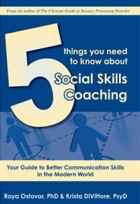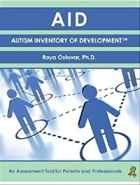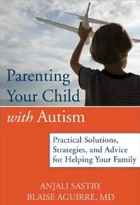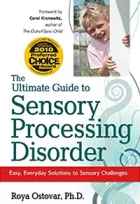Supporting Children & Teens on the Autism Spectrum
Diagnoses of autism spectrum disorder are as common as one in 54 kids. It’s time we understand the world through their eyes
July 26, 2023
Autism spectrum disorder (ASD) is a developmental disability that impacts an individual’s ability to interact and communicate with other people and the surrounding world. Like other diagnoses that can affect mental health, autism can vary widely in its scope and severity.
Autism is a very common developmental disability. At present, diagnoses of ASD are made at the rate of one in 54 children.
Autism can be a challenging diagnosis. What is true for one individual with this disorder may not be true for another.
Keep Reading To Learn
- The most common symptoms of autism
- Why sensory differences are so difficult to understand and accommodate
- Ways to support our loved ones with autism
According to Laura D. Mead, MSEd, MBA, co-director of McLean’s Pathways Academy, “Some individuals with autism are not able to speak and may require intensive behavioral therapy to prevent self-harming behaviors. Other individuals with autism become college professors, code complex computer programs, or run Fortune 500 companies.”
How can one diagnosis present so differently across different people? In some ways the concept can be hard to wrap our minds around, but in the same way that each of us is uniquely human, individuals with autism are unique in how they are affected by their ASD.
As we learn more about autism spectrum disorder, it is becoming clear that autism is a form of neurodiversity. This diagnosis brings with it a range of strengths and challenges.
Because of its complexity—and because so many of us are neurodiverse—it is urgent for parents, caregivers, and educators to reflect on what a kid or teen might be experiencing in a world not necessarily designed for those with ASD.
Understanding the Spectrum of Autism
Autism spectrum disorder affects each diagnosed person differently. These differences impact the ways to support them, as people’s needs vary greatly.
Every child develops at their own pace. It’s important to monitor your child’s growth and development, too.
Developmental concerns in infants and toddlers include, but are not limited to:
- A lack of expected eye contact
- Limited use of facial expressions
- Sensitivity to being touched
- Lack of response to name by around nine months
- Not using age-expected gestures by 12 months
- Not sharing items or not pointing to items of interest or toys by 15 months
- Not noticing items pointed at by adults by 18 months
Parents might see delays in the lifting of their head, crawling, and other developmental milestones.
Below we’ve outlined some of the most common symptoms of ASD. While someone may have autism and not have all these symptoms, these signs tend to appear often beyond infancy.
- Challenges communicating with peers and/or adults
- Challenges with social communication and interaction skills
- Cognitive rigidity; seeing things as black or white
- Highly preferred, narrow interests
- Repetitive, stereotyped behaviors
- Challenges tolerating frustration and non-preferred activities
- Challenges with sensory input and management
- Sensory seeking and/or sensory avoiding behaviors
If your child is not meeting typical developmental milestones, you may want to speak with their pediatrician to share your concerns. For school-age children, your child’s teacher and/or school psychologist are other important people to communicate your concerns to, in addition to their pediatrician.
Early diagnosis—and intervention—can make a world of difference with ASD.
Diagnoses made during the early years of a kid’s life allow parents to secure state-supported early intervention therapies. These include, but may not be limited to, speech and language, occupational, behavior, and physical therapies.
These early interventions support the development of any lagging skills and take advantage of the brain’s ability to reroute and strengthen its neural pathways, known as neural plasticity. These therapies can support learning and skill-building for kids in their own unique learning styles.
Early intervention can bring lifelong benefits and has a truly significant impact on a child’s functional and educational prognosis.
Watch Now!
Laura Mead provides examples of signs and symptoms, shares ways to support our loved ones as they get older, and answers questions about how we can improve quality of life for young people and their caretakers
Creating a Good Environment for Kids With Autism
In kids and teens with ASD, brain structure and wiring can be more diverse than in the average person. Many people with autism have described feeling as if they live in a world not designed for them.
Imagine moving to a country where they drive on the opposite side of the road, speak a language you barely understand, and have a secret language of head nods and hand gestures that are impossible to memorize or understand. It only makes sense that you’d be frustrated and anxious. You’d have to work extra hard to communicate!
Many kids and teens with ASD feel this way every day. How they perceive the world around them isn’t how many others do.
So why are we making children work extra hard to communicate? And how can we work with them to feel more at ease in their environment?
Consistency
One way, Mead encouraged, is through providing structure that’s both predictable and flexible. Because the world wasn’t designed for ASD-style brains, she noted, “This type of environment is supportive. It can go a long way to bridge the gap, especially as children learn to develop cognitive flexibility.”
The foundation of an autism-friendly environment begins with consistency. Parents should keep the importance of schedules in mind when supporting children with ASD.
Children with this condition need a consistent environment to support and encourage learning. Consistency can play a significant role in reducing stress and anxiety for both parents and children.
According to Mead, parents should aim to provide a consistent schedule that varies by age and needs, with built-in opportunities for downtime to engage in preferred activities. Both parent and child benefit from developing a consistent way to respond to challenging behavior.
When young people with ASD have a sense of consistency, they are more likely to respond with consistency, as well. A nonjudgmental and calm tone of voice can prevent additional behavioral escalation when a child is upset.
Try to remember that the neurotypically structured world we live in can feel overstimulating, chaotic, and confusing to a child with ASD. They want to do well and be happy. They don’t want to have meltdowns—just as much as you don’t.

Flexibility
Consistency is critical, but it cannot stand alone; children and teens with autism need flexibility, as well.
Mead also stressed the importance of flexibility. We want to keep schedules to help children and teens develop comfort within a routine, but it is also important to be flexible.
While it’s hard for adults to comprehend, it’s helpful to take breaks—and sometimes, scrap plans altogether. She noted, “Scheduled breaks in activities and throughout the day are important. But breaks on an as needed basis are just as important. This is where adult flexibility comes into play.”
According to Mead, parents should always keep the big picture in mind. “As adults, we must remain flexible and meet the child where they are,” she explained. “That’s the only way we can craft learning experiences to help them develop flexibility.”
This means that as adults, she said, we need to adjust our expectations. Often as adults, we feel a strong need to see things through. It is perfectly okay to stop an activity when it isn’t working out. Give yourself permission to scrap any plans that aren’t working.
More importantly, we need to determine which battles are important to pick.
“We want to make sure that when we make a rule, it is truly important and not just our attempt to regain the control we feel we are losing—especially if we are parenting a child that doesn’t meet expectations in the same way as their siblings do,” Mead said.
We are better suited to manage our frustration—even though it can be tough at times—and understand that when an individual with ASD is experiencing a challenge, we need to play a supportive and understanding role.
Understanding and Adapting to Sensory Differences
Individuals with ASD likely experience sensory input in a very different way than the average, or neurotypical, person does. Many kids and teens on the autism spectrum experience sound, light, and sensations much more intensely.
For some, sound is heavily impacted. For others, it is primarily skin sensations that are intense. For example, light touch feels painful but heavy touch feels good; tags are scratchy; they cannot ignore the seam in a sock.
For some, it is sensations from foods; certain flavors or consistencies are intolerable. For some, all sensory input feels extreme. For others, sensory input feels minimal, and they actively seek additional input (for example, flapping hands or fingers, making noises, or playing videos or sounds repeatedly).
Individuals with ASD may have a variety of sensory sensitivities and needs. It is important to realize that as adults with matured sensory systems, we cannot assume that a child with autism is experiencing the world in the exact same manner that we are. Behaviors we see may be due to sensory challenges a child can’t put into words.
We can help with sensory accommodations in a variety of ways. This includes stopping for breaks, allowing preferred activities, or providing various sensory items, such as fidget toys or weighted stuffed animals.
In addition, it’s beneficial to teach children self-soothing strategies and calming methods. Young children and teens are often more open to meditation, visualization, and progressive relaxation techniques than adults.
One calming technique that can be taught and practiced involves touching the thumb to each finger with one hand and counting to eight. Then try this with both hands. The focus that the thumb to finger action requires can redirect attention away from frustration.
Additionally, occupational therapists are highly knowledgeable about sensory integration and are invaluable members of your child’s treatment team.
Helping Kids & Teens With Autism
Laura D. Mead, MSEd, MBA, explains how we can provide both flexible and supportive structure for children and teens with autism spectrum disorder, shares tips to reduce stress in both caregivers and kids, and answers questions about ASD.

Autism and Social Skills: Why Do Kids Struggle?
Society has an extensive and complex web of unwritten social rules and expectations that dictate the right way to do everything we do. Common activities that we do daily come with sophisticated rules.
We have learned these rules over the years, most of us unconsciously doing so. Are you standing in line? If so, there’s an unwritten rule about how much distance to leave in front of you.
Speaking to someone? There is an unwritten rule about how loud you should be speaking.
Eating a snack? There are multiple unwritten rules about when it is considered appropriate to do so and what you can eat and where.
Each of these rules also has several factors that can change things for us. Are you waiting in line at an ATM? You need to leave more space than if you are lining up in a school gym class.
What about waiting in line at the grocery store? The amount of distance you leave between you and the person in front of you is about half of the ATM distance. Unless you’re in a pandemic, and then ATM distance is probably fine.
Just imagine how confusing a world based on a system of seemingly illogical rules—that no one has explained but somehow everyone understands—must be. This may be even more confusing if you need thorough explanations and practice of what seems to come effortlessly to many others.
This is what the world is like for many with autism spectrum disorder.
For children and teens with ASD, Mead explained that they need direct instruction with social skills.
“Children and teens with autism likely need to learn these unwritten social rules in a more direct fashion than someone without an autism diagnosis,” she said. However, some individuals with ASD do pick up many social rules without having been directly taught.
It’s hard to speak in generalities when talking about autism. To be safe, don’t assume your child knows an unwritten social rule, especially if they seem to be breaking it regularly. There is a high chance that they are unaware such a rule even exists.
Patience and flexibility are critical to parenting a child or teen with autism. Sometimes knowing what is expected and doing it are completely different things.
As a parent or caregiver, you are your child’s first and primary social skills instructor. Modeling through explaining what you are doing and why aids your child in skill development.
In addition, role playing and practicing skills help children to start to apply them subconsciously. A speech and language pathologist may also be able to help, not only with communication, but also with social skills. It is never too early—or too late—to start working on social skills.
As adults, we need to take the lead in being flexible when a child with ASD can’t be. By putting ourselves in the shoes of an individual with this condition, we are much better able to see why sensory needs and social skills prove so challenging.
By providing support with empathy, we support the specific needs and the whole child.
Meeting the Needs of Students With Autism
McLean’s Pathways Academy is a fully accredited school aimed at helping students with autism spectrum disorders. Learn more about how we can help your child succeed—academically and personally.

How You Can Help Make a Difference for a Child With ASD
There are a few ways to make a major impact in supporting those we love with autism. Understanding behavior is vital to making a difference in the child’s life.
“All behavior is communication,” explained Mead. “It starts as early as infancy when newborn babies cry to let us know they need something. When we’re upset, we don’t always have the words to explain what is going on.”
Children on the spectrum often struggle with communication, impulse control, frustration tolerance, and emotional management. Sometimes, behavior can become out of control with a child or teen with ASD. That is one method of sharing that they’re upset or unsure of what’s going on and can’t express it any other way.
Parents often punish bad behavior. With kids who have autism, it is more important to reward good behavior.
While punishment may work for those with ASD in some cases, it may not be helpful for everyone. Punishments, especially those that prevent the child from engaging in a calming, preferred activity, can escalate behavior in the moment and may not produce intended results.
Rewarding the behaviors we want to see can increase the likelihood of recurrence. This works for all of us—what adult doesn’t like a compliment from their boss? It also provides an opportunity for the child to reflect on their behavior in a positive way.
You can change the language you use to talk about the condition. More recently, people who have been diagnosed with autism have begun being referred to as “neurodiverse.”
Neurodiversity, or being neurodivergent, simply means that people will experience, understand, and engage with the world around them in a way that’s unique to them and their health conditions.
Encouraging others to express autism as neurodiversity is a very easy starting point to reduce stigma around the condition.
Changing your language around autism spectrum disorder lets kids and teens with the condition know that you’re trying to understand the world through their sensory experience. In addition, it acknowledges that you recognize—and embrace—their uniqueness.
The more parents and caregivers understand about the autism spectrum, the better prepared they will be able to create the predictable, sensory-friendly, and socially supportive environments their children with ASD need to feel comfortable.
If your child is struggling, McLean is here to help. Call us today at 617.855.2820 to learn more about our world-class mental health treatment options.
Want More Information?
Looking for even more information about autism? You may find these resources helpful.
Resources
You may find this additional information useful:
- List of Early Intervention Resources and Contacts by State – Centers for Disease Control
- Autism Information – Centers for Disease Control
- Health and Human Services: Autism Information
- Sensory Integration in Autism Spectrum Disorders – article from the Autism Research Institute
- Occupational Therapy for Children and Youth – American Occupational Therapy Association
- Accommodations for ASD – Information on individual education plans (IEP) from Partnership for Extraordinary Minds
Helpful Links
These organizations may also have useful information:
Asperger/Autism Network
A nonprofit organization that provides information, education, community, support, and advocacy to individuals affected by autism spectrum disorder and other neurological differences, including support for families and professionals.
Autism Science Foundation
A nonprofit organization that supports cutting-edge autism spectrum disorder research through funding and other assistance. They provide information and increase awareness about autism spectrum disorder, and provide support to the individuals and families affected by the disorder.
Autism Speaks
Autism Speaks is dedicated to addressing the needs of individuals with autism spectrum disorder and related conditions and their families through advocacy, education, research, and support.
Books About Autism

5 Things You Need to Know About Social Skills Coaching: Your Guide to Better Communication Skills in the Modern World
by Roya Ostovar, PhD, and Krista DiVittore, PsyD
(Future Horizons, Inc., 2017)

The Autism Inventory of Development (AID): An Assessment Tool for Parents and Professionals
by Roya Ostovar, PhD
(Future Horizons, Inc., 2017)

Parenting Your Child With Autism: Practical Solutions, Strategies, and Advice for Helping Your Family
by Anjali Sastry and Blaise Aguirre, MD
(New Harbinger, 2012)

The Ultimate Guide to Sensory Processing Disorder
by Roya Ostovar, PhD
(Sensory World, 2010)



